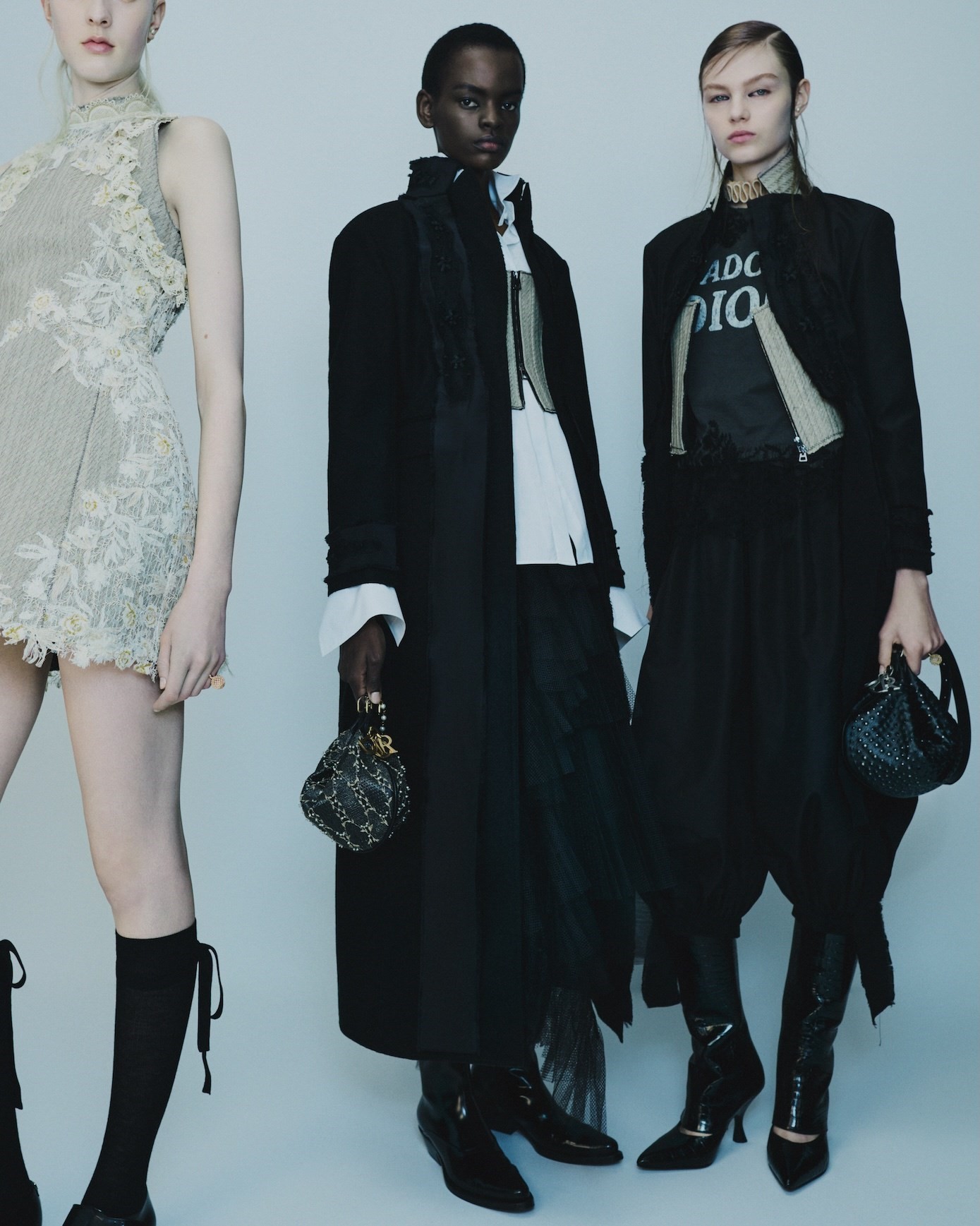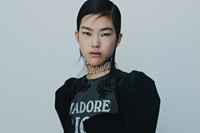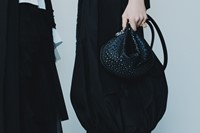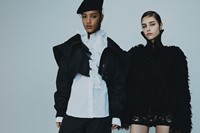Fashion is all about transformation, for better or for worse. Lace up your corset, add on your bustle and your high heels, and you construct yourself anew, fashion as a verb – remaking your body. That is, perhaps, true of no house more than Christian Dior, whose founder once said he wished to save women from nature – a pithy phrase that perfectly underlined his manufactured silhouettes, of cinched waists and swirling hips. In the preparations for his first collection, Dior recalled, a model fainted. “I thought I was clutching her securely, but she continued to slide to the floor – and I found myself holding … her bust! I had completely forgotten that in my desire to give prominence to this most feminine attribute, I had asked those whom nature had neglected, to equip themselves with ‘falsies’.”
Dior itself also transforms, of course. Oscillating through different artistic directors, each stewarding Dior through a specific period, it is ever transforming. And those ideas appealed to Maria Grazia Chiuri for her Autumn/Winter 2025 Dior ready-to-wear show. She connected them to another well-known story of transformation – Virginia Woolf’s Orlando, whose hero (slash heroine) traipses through time and switches gender for good measure. “Women at the beginning of the last century – they were breaking the rules, wearing men’s clothes, and men too,” Chiuri said backstage before the show, taking inspiration from their ever-fluctuating wardrobes to design her own. “To be transversal in our day today is very important,” she said, of her looks that cut through boundaries – masculine-feminine, elaborate-simple, then and now.
Chiuri has been on a costume history trip recently – witness her January haute couture collection, where she reconsidered the crinoline for the twenty-first century. This one was more about that other cage of nineteenth-century femininity, the corset. Chiuri fused them into her jackets, and when zipped or unzipped they changed the way the garments sat on the body, peeling away. “You can change,” said Chiuri, applying these corsets to masculine jackets as well as the feminine Bar, and to trenches and sportswear. “With new technologies, these references that come from the past, that come from a different century, you can create a modern way to wear.”
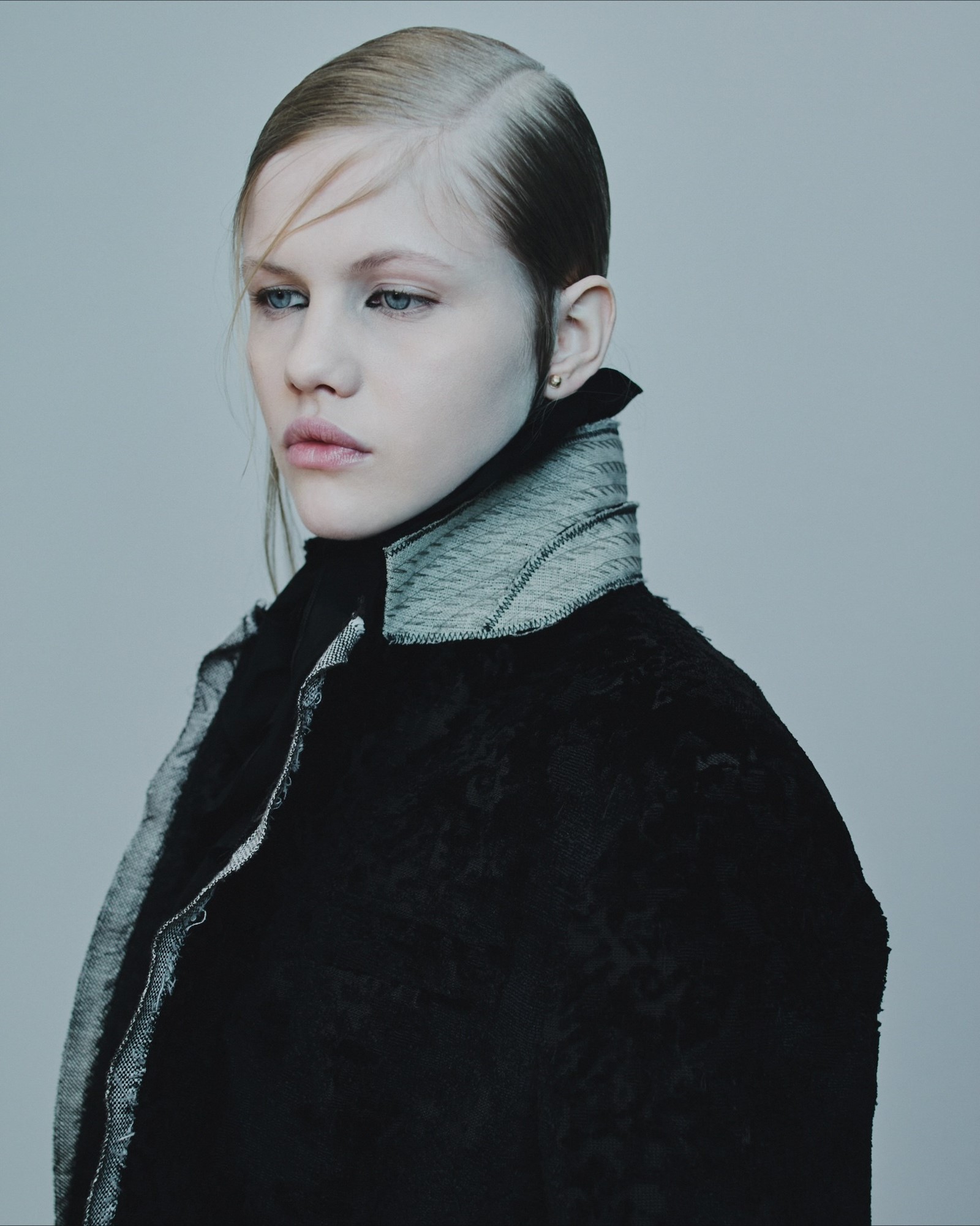
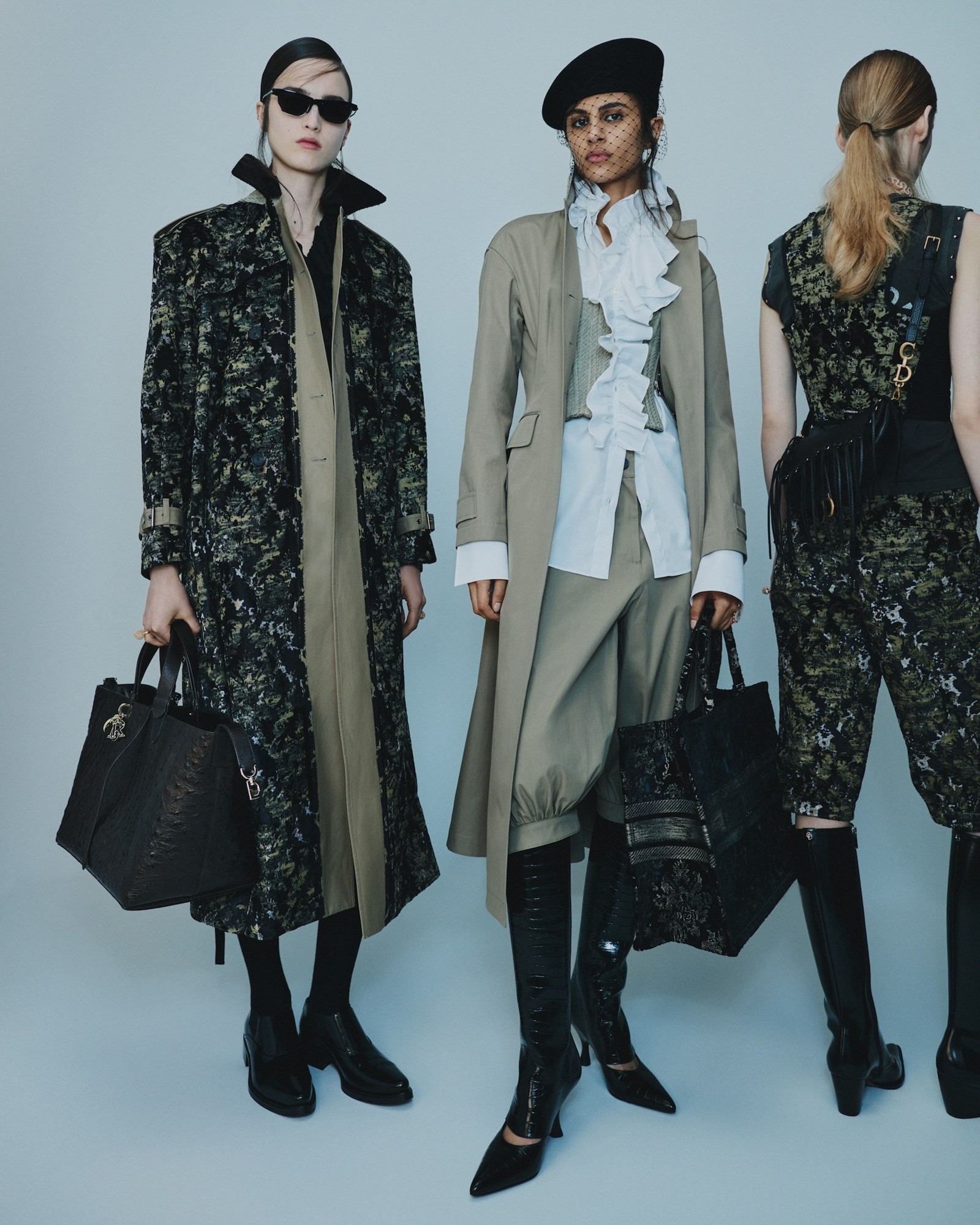
History was ever-present. Velvet jacquards, like silks ripped from the walls of a renaissance palace, were created with cotton – the first time such elaborate fabrics have been soft, light and therefore wearable, Chiuri said. She also fell in love with lace, encrusting it across dresses and t-shirts like spiderwebs clinging to heirlooms. “To transform a historical material, to move it to the future,” she said. Of course, that historical ‘material’ could be the archives of Dior itself. One of the newly lace-encrusted t-shirts was John Galliano’s ‘J’adore Dior’ design, introduced a quarter century ago (to make you feel old). From Dior’s own past, the designers Chiuri chose to reference were Galliano, and her fellow Italian Gianfranco Ferré, who preceded Galliano and designed Dior from 1989 to 1996.
“I want to play with the history of the house – including its recent history,” Chiuri said. “I wanted to celebrate the history of the brand, and Mr Galliano was a big part of the history of the house, Mr Ferré too.” Indeed, if Galliano often gets his dues, Ferré’s tenure is an overlooked but vital period of the house. Under Ferré, who died in 2007, Dior introduced the Lady Dior bag that is still a best-seller, and also reintroduced codes and signifiers that we associate with Dior today – the Louis Seize medallion-backed chairs, the cross-hatched cane pattern taken from their seats. He even changed the signature Dior grey, which had become adulterated over the passage of time, back to the original. “I chose some elements of their histories in the house – Galliano the saddle and J’adore, Ferre the Cannage and Lady Dior,” Chiuri said. She also created an homage to the white shirt, which was Ferré’s signature, although hers could be transformed yet again, cuffs or collars added and removed, like the ever-changing component parts of historical dress, or the rip-away bits of costumes in a play.
That’s a fitting comparison: transforming even our perception of a fashion show, Chiuri staged this Dior show in a series of five acts inspired by the chapters of Orlando, with ambitious scenography by the American theatre director and playwright Robert Wilson. “Usually, theatre brings fashion to them to collaborate,” Chiuri said. “Here, it’s the other way around.” And Wilson transformed Dior’s show space into brimstone and fire, her women marching out like an army from past, present, and future. Dior transformed, for another season.
